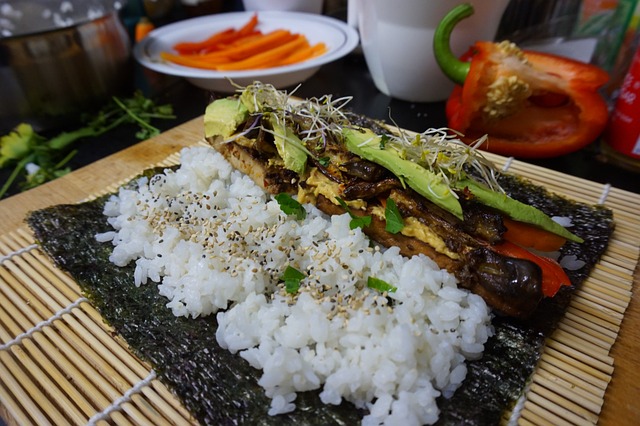
As more people embrace a plant-based diet, the demand for nutritious and versatile grains has surged. Vegan grains not only provide essential nutrients, but also offer an array of flavors and textures that can transform any dish into a culinary masterpiece.
While rice has long been a staple in many cultures, there is a whole universe of grains waiting to be discovered. Farro, quinoa, barley, and millet are just a few examples of the diverse options available to enhance your vegan cooking. Each grain brings a unique profile of taste and texture, opening up a world of culinary creativity for anyone seeking to experiment with plant-based ingredients.
For those seeking a healthier alternative to refined grains, these vegan options are a boon. Packed with fiber, vitamins, and minerals, they provide a satisfying and nutritious foundation for a well-balanced diet. Whether you’re looking to create hearty salads, creamy risottos, or comforting soups, these grains will unlock a whole new dimension of flavor and nourishment.
Gone are the days when vegan meals were considered bland or unexciting. By incorporating an assortment of grains into your culinary repertoire, you’ll be able to delight your taste buds and impress even the most discerning palate. From the nutty aroma of quinoa to the chewy texture of farro, each grain offers an opportunity to elevate your culinary creations to new heights.
Rice: A Staple in Vegan Cuisine
Rice has been a fundamental part of vegan cuisine for centuries. This humble grain, with its simple yet satisfying flavor, has been a staple in many cultures around the world. Whether it’s the fragrant Basmati rice in Indian biryanis or the sticky sushi rice used in Japanese rolls, rice offers endless possibilities for creating nourishing and delicious vegan dishes.
Versatility at Its Finest
One of the greatest advantages of rice is its versatility. It effortlessly adapts to various cooking techniques, allowing it to be transformed into an array of dishes. From fluffy and light to creamy and hearty, rice can be prepared in countless ways to suit any palate.
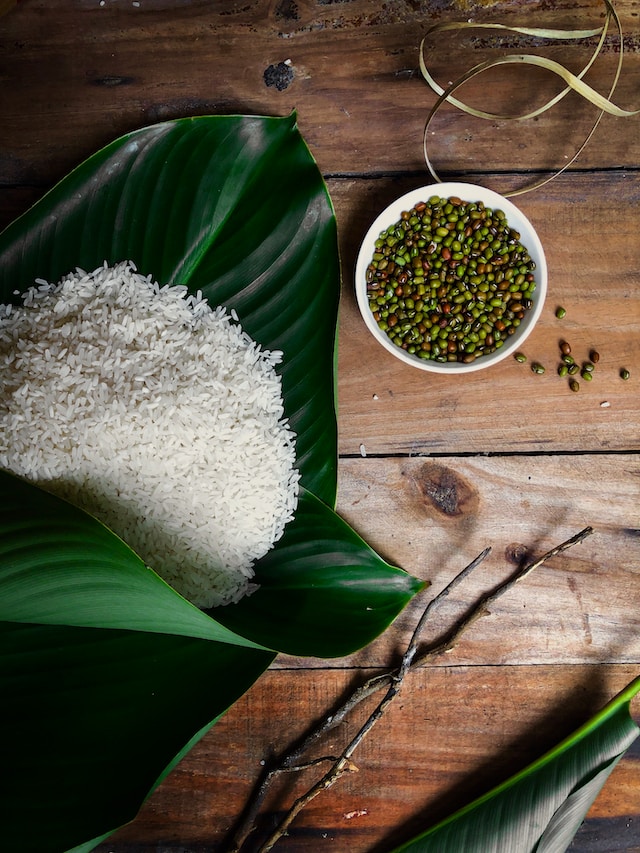
For a quick and easy weeknight meal, a steaming bowl of stir-fried rice with mixed vegetables and a splash of soy sauce is all you need. If you’re in the mood for something more substantial, a comforting bowl of vegan risotto, using arborio or carnaroli rice, will satisfy both your taste buds and your hunger.
Rice also plays a vital role in traditional grain-based dishes like dolmas, where it is combined with aromatic herbs and spices.
This creates a delectable filling for grape leaves or vegetables. And let’s not forget the ever-popular sushi, where perfectly cooked rice forms the foundation of those delightful bite-sized rolls.
Nutritional Powerhouse
Although rice may appear simple, it is far from lacking in nutrients. It is a good source of carbohydrates, providing energy to fuel our active lives, and contains small amounts of essential vitamins and minerals. Brown rice, in particular, is a nutritional powerhouse, boasting higher fiber content and a more substantial dose of vitamins and minerals compared to its refined white counterpart.
A Wide Variety to Choose From
When it comes to rice, there is no shortage of options. From short-grain to long-grain, jasmine to basmati, each variety carries its own distinct flavor and texture. This allows you to tailor your choice to match the recipe at hand, ensuring a satisfying and harmonious culinary experience.
Incorporating rice into your vegan meals not only adds depth and richness to your dishes but also provides a sense of familiarity and comfort. It is a reminder that embracing a plant-based lifestyle does not mean sacrificing taste or enjoyment.
Beyond Rice: Exploring Other Vegan Grains
While rice has long been a beloved staple in many culinary traditions, there is a whole world of vegan grains waiting to be discovered. These grains not only offer unique flavors and textures, but they also pack a nutritional punch that will elevate your vegan cooking to new heights.
Farro: A Rustic Delight
Farro, an ancient grain with a rich history, has gained popularity in recent years for its earthy taste and chewy texture. This hearty grain is packed with fiber and protein, making it a satisfying addition to soups, salads, and grain bowls. Cooked farro retains a satisfying chewiness, which adds a delightful contrast to other ingredients in your dishes.
Quinoa: The Versatile Superfood
Quinoa has quickly become a staple in many plant-based kitchens, and it’s not hard to see why. This versatile grain is not only a complete protein, but it also offers a delicate nutty flavor that pairs well with a variety of ingredients. From fluffy quinoa salads to hearty quinoa casseroles, this superfood grain adds a nutritious punch to any dish.
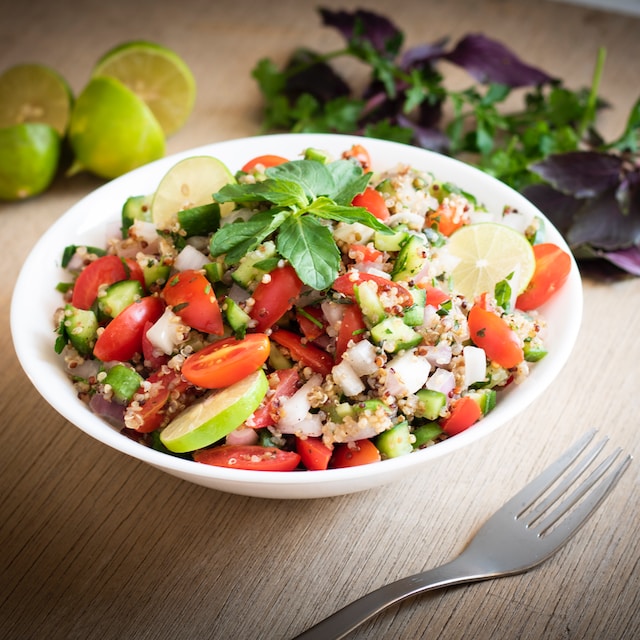
Barley: A Hearty Grain with a Nutty Twist
Barley, with its chewy texture and nutty flavor, adds depth and substance to vegan dishes. This grain is known for its heart-healthy properties and its ability to keep you feeling satisfied for longer periods. Use barley in comforting soups, risottos, or even in hearty salads for a wholesome and nutritious meal.
Millet: The Small but Mighty Grain
Often overlooked, millet is a tiny grain with a big personality. It has a mildly sweet and nutty flavor, which makes it a fantastic addition to both savory and sweet dishes. Millet can be used to create fluffy pilafs, creamy porridges, or even as a base for delicious veggie burgers.
With these vegan grains at your disposal, you can unleash your culinary creativity and embark on a flavorful journey that goes beyond rice. Each grain brings its own unique character, allowing you to experiment and explore a wide range of dishes that are both satisfying and nutritious.
Incorporating these grains into your vegan cooking not only expands your repertoire of flavors, but it also provides a boost of essential nutrients. From fiber to protein, vitamins to minerals, these grains offer a plethora of health benefits that will nourish your body and leave you feeling energized.
Cooking Techniques and Tips
When it comes to cooking vegan grains, there are a few essential techniques and tips that can help you create delicious and flavorful dishes. Whether you’re a beginner or a seasoned chef, these simple guidelines will ensure that your grains are cooked to perfection and that every dish you create is a success.
- Properly Rinse Your Grains
Before cooking your grains, it’s important to give them a good rinse. This helps remove any dirt or debris that may be present, ensuring a clean and pure flavor. Simply place your grains in a fine-mesh sieve and rinse under cold water until the water runs clear. This step is particularly crucial for quinoa, as it helps remove its natural coating, which can give it a bitter taste if not rinsed properly.
- Use the Right Water-to-Grain Ratio
Each type of grain requires a specific ratio of water to achieve the perfect texture. While rice typically requires a 1:2 ratio (one part rice to two parts water), other grains like quinoa or farro may require slightly different ratios.
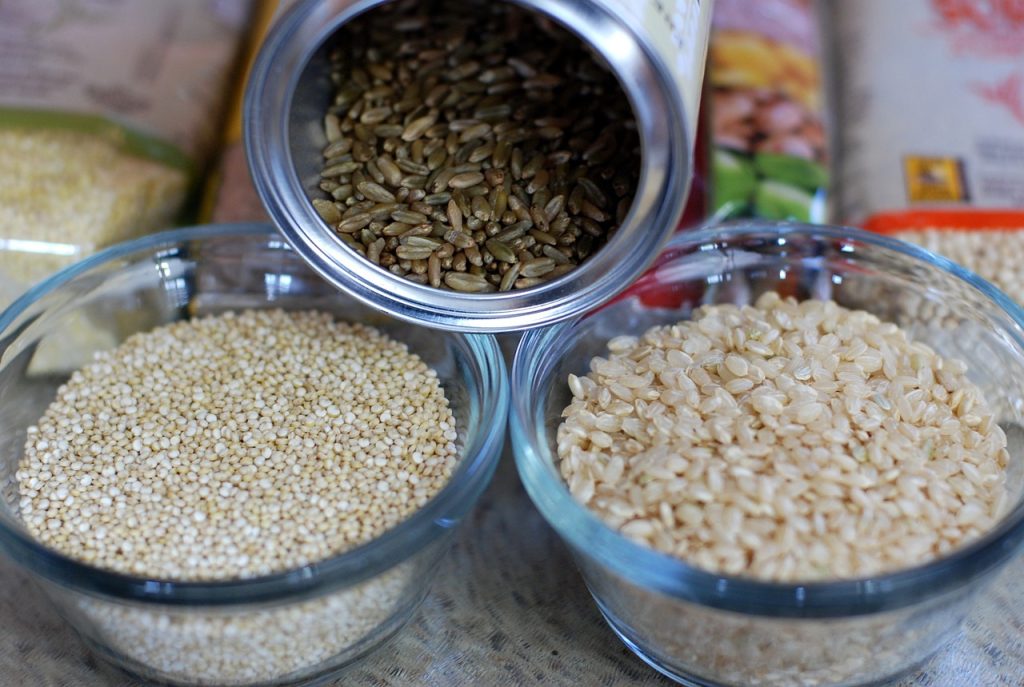
It’s important to follow the cooking instructions for each grain, as the recommended ratios may vary. Using the correct ratio will ensure that your grains cook evenly and don’t become mushy or undercooked.
- Experiment with Cooking Methods
While boiling grains on the stovetop is the most common method, there are other techniques you can explore to add variety to your cooking. For example, you can try cooking rice or quinoa in a rice cooker for a foolproof and hands-off approach. Alternatively, you can experiment with cooking grains in a pressure cooker or instant pot, which can significantly reduce cooking times. Remember to adjust the water-to-grain ratio accordingly when using different cooking methods.
- Add Flavor with Broths and Spices
To elevate the flavor of your grains, consider cooking them in vegetable broth instead of plain water. This will infuse the grains with savory and aromatic notes, enhancing the overall taste of your dish. Additionally, don’t be afraid to experiment with spices and herbs. For example, adding a bay leaf or a pinch of turmeric while cooking rice can impart a subtle and delightful flavor. Be creative with your seasonings and see how they transform your grains into culinary delights.
- Master the Art of Fluffing
Once your grains have finished cooking, it’s important to fluff them properly to ensure a light and airy texture. Using a fork, gently fluff the grains by separating them and loosening them from the bottom of the pot. This helps prevent clumping and ensures that each grain is evenly coated with any added flavors or seasonings. Fluffing also helps release any excess steam, preventing your grains from becoming overly sticky.
Vegan Grain Bowls: Wholesome and Flavorful Creations
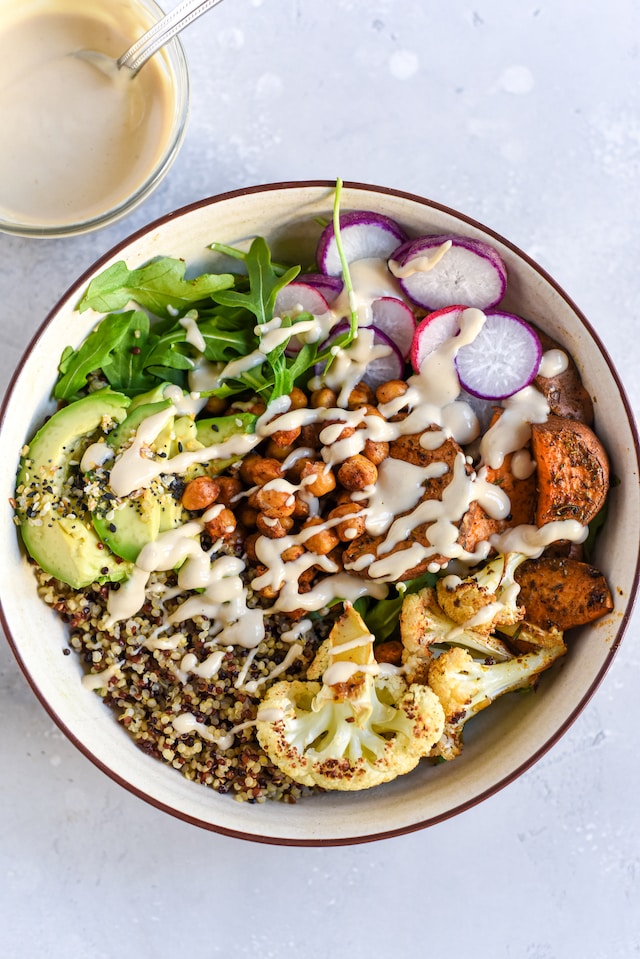
When it comes to creating nourishing and satisfying meals, vegan grain bowls are a true game-changer. These versatile bowls offer a delightful combination of flavors, textures, and nutrients, making them the perfect canvas for showcasing the diverse world of vegan grains. With a range of colorful vegetables, protein-rich legumes, and vibrant sauces, grain bowls provide a balanced and flavorful experience that will leave you feeling nourished and satisfied.
Building a Wholesome Bowl
The beauty of grain bowls lies in their simplicity and flexibility. You can customize them to suit your taste preferences and dietary needs, making them an ideal choice for vegans and non-vegans alike. Here are a few key components to consider when building your perfect vegan grain bowl:
- Base: Start with a hearty serving of your favorite cooked grain. Options like brown rice, quinoa, or farro provide a nutritious foundation that will keep you fueled throughout the day.
- Protein: Add a source of plant-based protein to your bowl. Legumes like chickpeas, black beans, or lentils are excellent choices. You can also incorporate tofu, tempeh, or seitan for a more substantial option.
- Vegetables: Load up your bowl with a vibrant assortment of fresh or roasted vegetables. Think colorful bell peppers, crunchy cucumbers, juicy tomatoes, or roasted root vegetables. The possibilities are endless!
- Greens: Don’t forget to include some leafy greens for added nutrition. Spinach, kale, or arugula make great additions, providing a burst of freshness and fiber.
- Dressing or Sauce: Finish off your bowl with a flavorful dressing or sauce. From tangy tahini dressings to zesty citrus vinaigrettes or creamy avocado sauces, the right dressing can elevate your grain bowl to new heights.
Simple and Flavorful Combinations
Now that you have the basics covered, let’s explore some simple and flavorful vegan grain bowl combinations that will inspire your culinary creativity:
Mediterranean Delight: Start with a base of quinoa or bulgur wheat, then add chickpeas, roasted eggplant, cherry tomatoes, and cucumber. Top it off with a drizzle of lemon-tahini dressing and a sprinkle of fresh parsley.
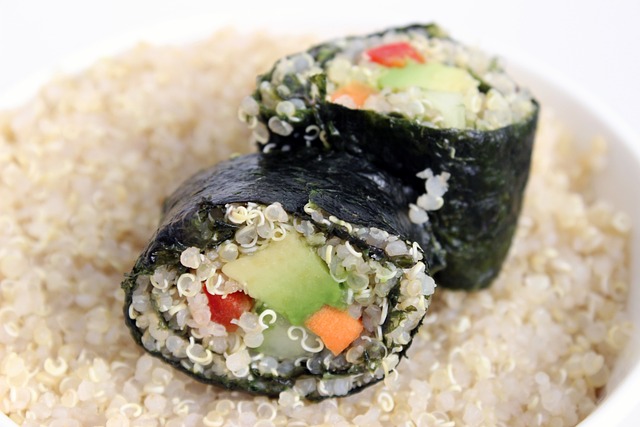
Asian Fusion: Use brown rice as a base and top it with teriyaki-glazed tofu, sautéed bok choy, shredded carrots, and edamame. Finish it off with a spicy peanut sauce and a sprinkle of sesame seeds.
Mexican Fiesta: Begin with a base of black beans and cilantro-lime rice, then add roasted sweet potatoes, grilled corn, diced avocado, and salsa. Top it off with a squeeze of lime and a dollop of dairy-free sour cream.
Vegan grains offer endless possibilities for culinary exploration and nourishment. From the humble rice to the diverse world of grains like farro, quinoa, barley, and millet, there is a grain to suit every taste and dietary preference. These versatile grains not only provide essential nutrients but also add depth, flavor, and texture to any dish. With the right cooking techniques and creative combinations, vegan grain-based meals can be both satisfying and delicious. So, why stick to just rice when you can venture into a whole universe of vegan grains waiting to be discovered?